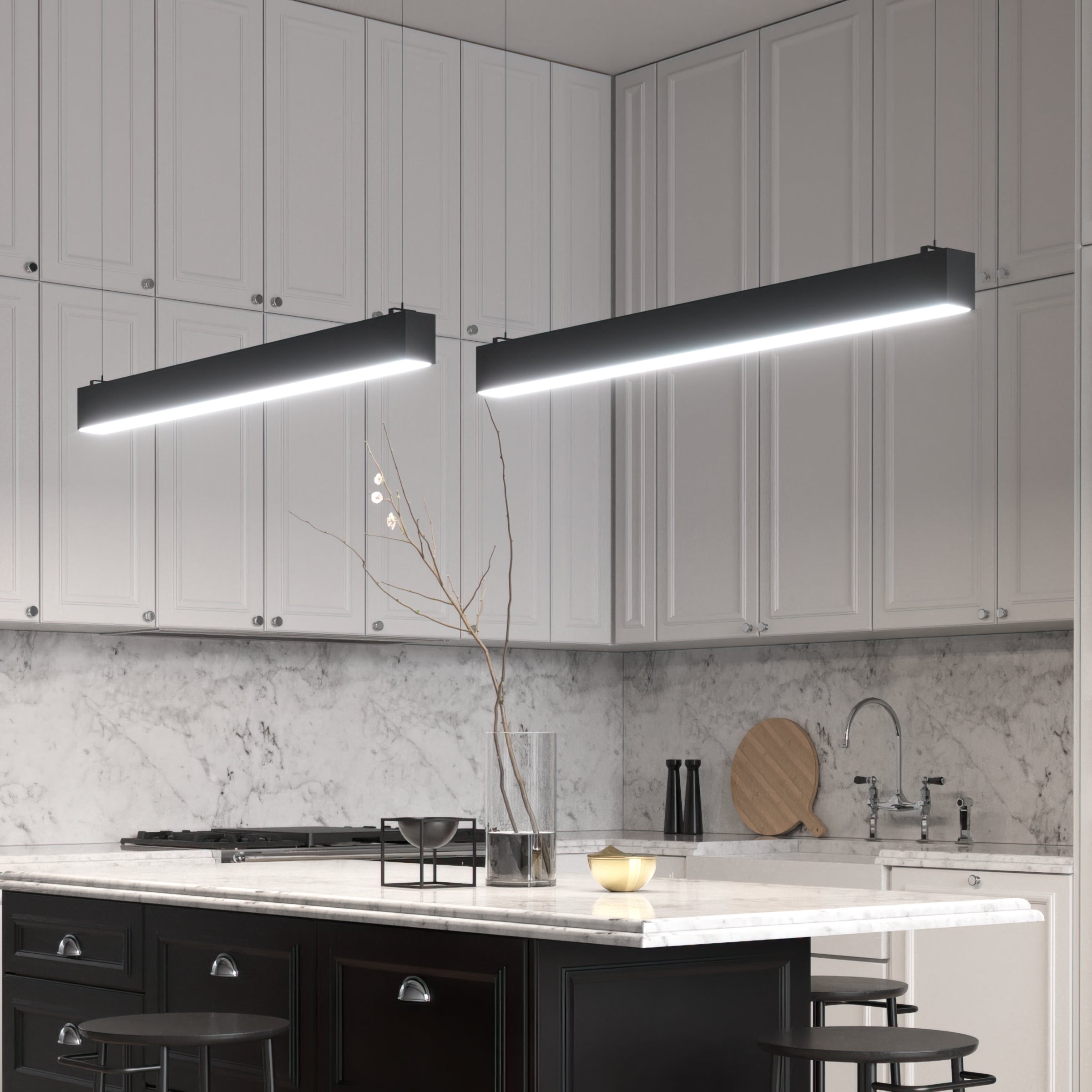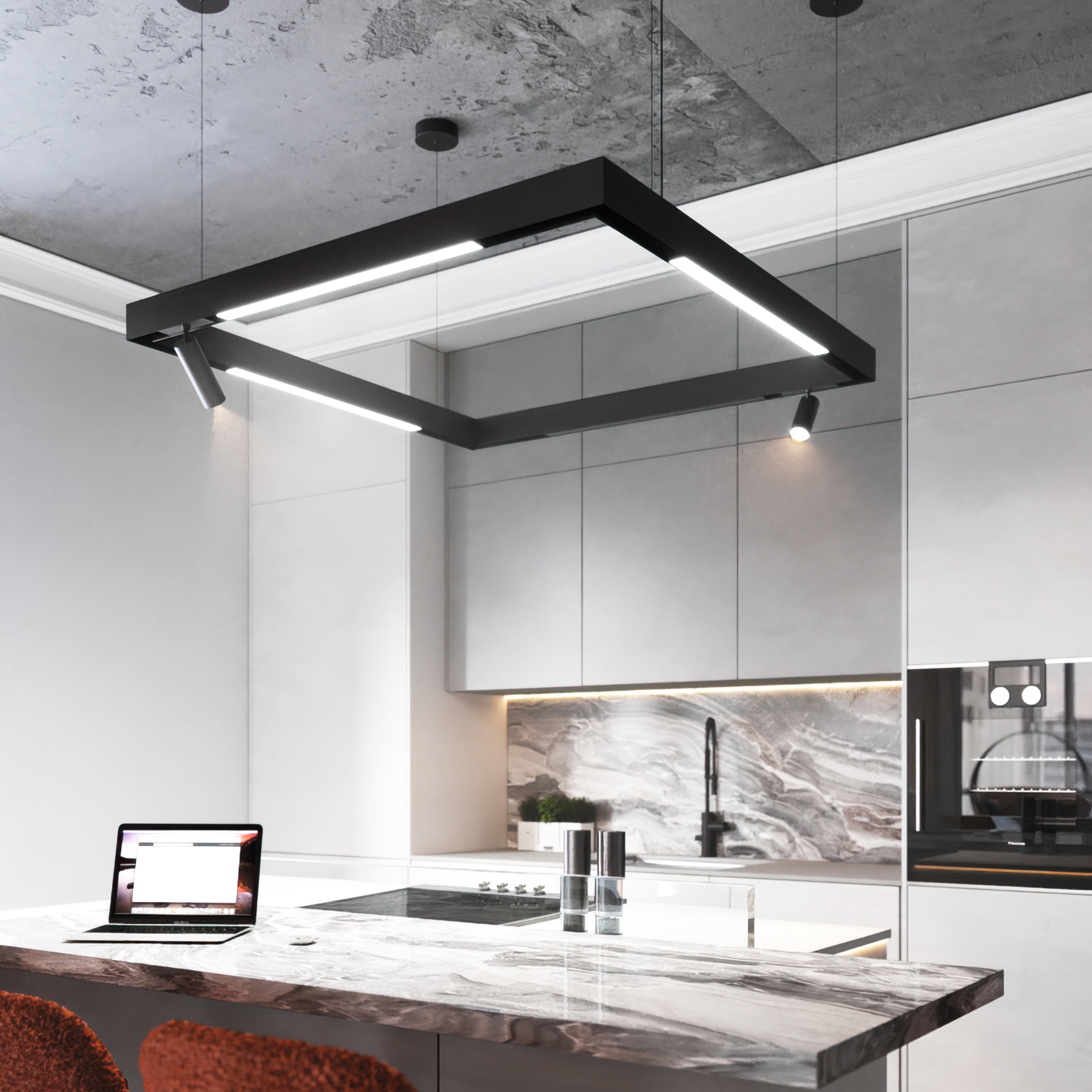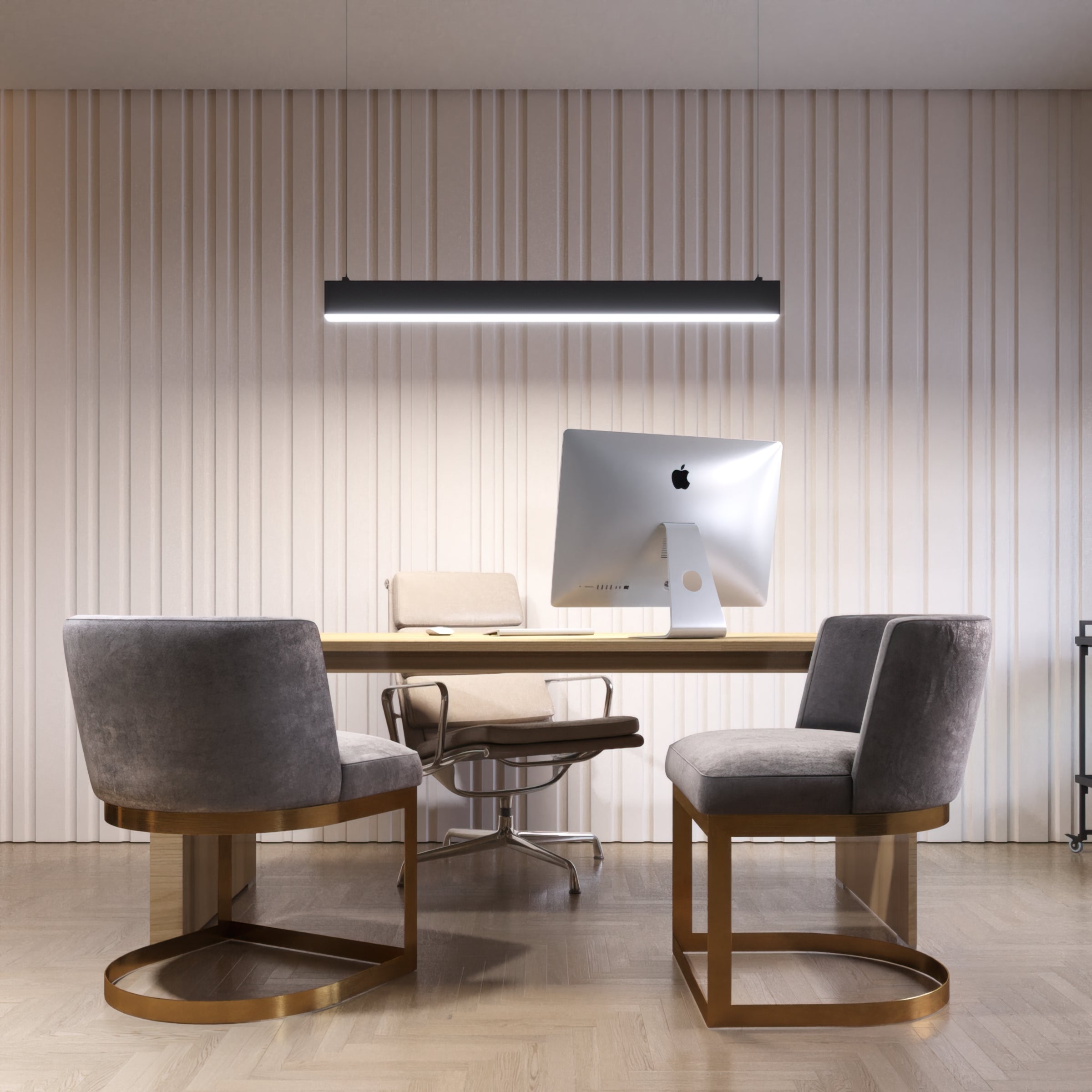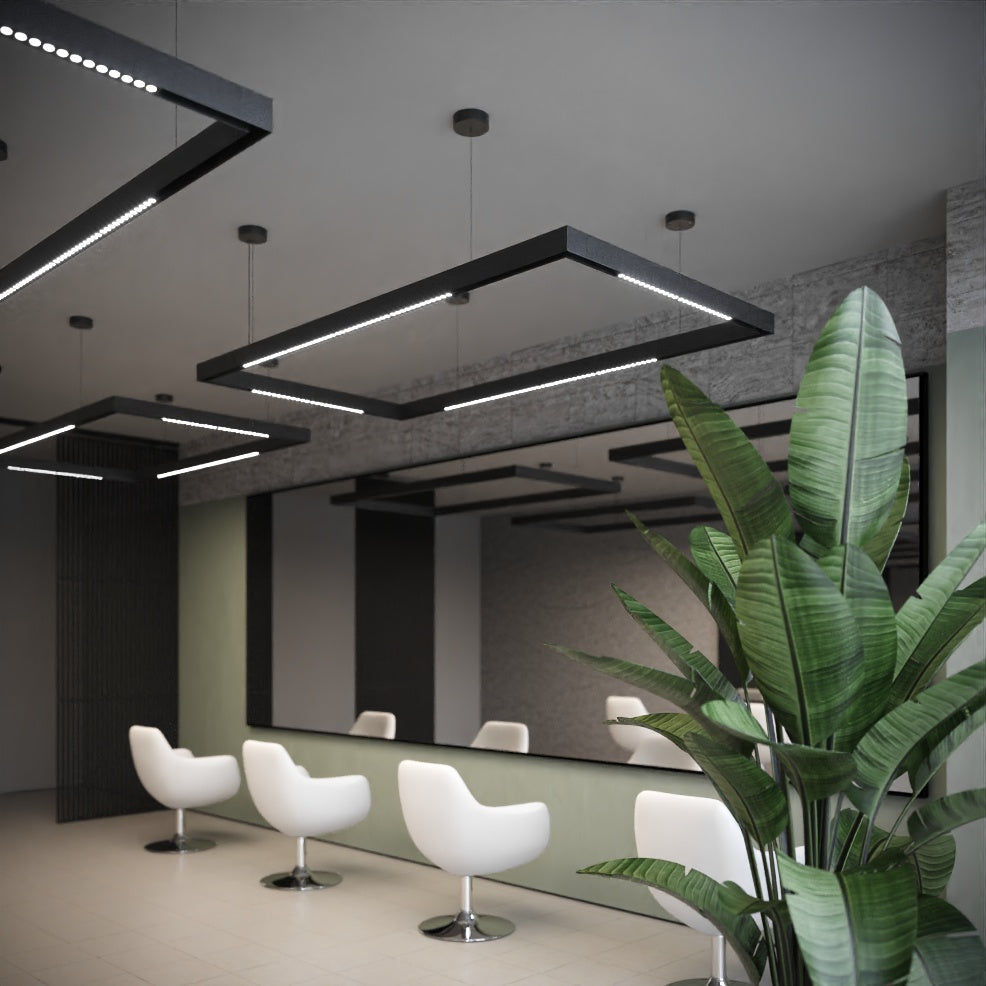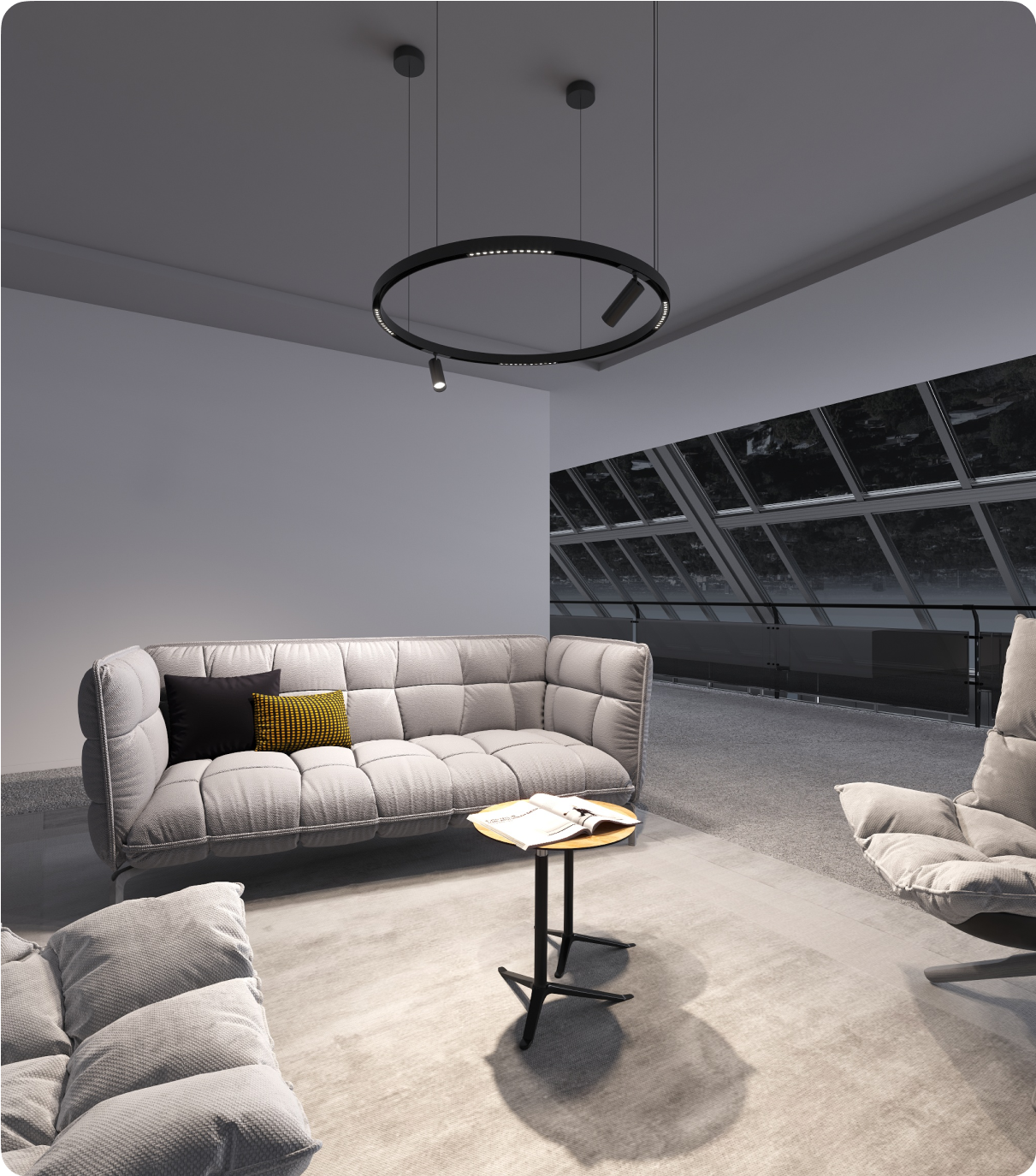Light plays a crucial role when creating the perfect ambiance in a hair salon. Not only does it enhance the overall aesthetic appeal, but it also ensures that stylists have the right conditions to work their magic. LED lighting has gained immense popularity in the salon industry in recent years. And for good reason. Hair salon ceiling lights offer a winning combination of elegance and brightness, making them an ideal choice for any hair salon.
LED lighting provides a clean and even illumination that showcases hair colors accurately. The bright and natural light produced by LEDs not only enhances the overall appearance of the salon but also allows stylists to work with precision. Additionally, LED lights are energy-efficient and have a longer lifespan compare to traditional lighting options, making them a cost-effective solution for salon owners.
In this blog post, we will explore the benefits of LED lighting in hair salons and how it can transform the salon experience for both clients and stylists. Additionally, we will provide some hair salon lighting ideas to inspire your salon's lighting design.
Hair Salon Lighting Tips
Energy-Efficient Lighting
LED lamps, known as Light Emitting Diode lamps, have transformed the world of energy-efficient lighting. If possible, it is recommended to choose salon light fixtures that are compatible with LED lamps. These lamps offer a range of color temperatures and have a high Color Rendering Index, making them perfect for salon environments. Although LED lamps may have a higher upfront cost, they are a worthwhile investment due to their long lifespan, energy efficiency, and cost-saving benefits in maintenance and replacement.
Light Strength
Until recently, we were more familiar with wattage as a measure of light intensity. For example, a standard 100-watt incandescent bulb is generally perceived as bright, but we may not know that it outputs 1600 lumens. However, with newer and more efficient light sources like compact fluorescent lamps (CFL) and light-emitting diode (LED) lights, we now understand that a light fixture's power is measured in watts. In contrast, the amount of light emitted is measured in lumens. These energy-efficient options, such as LED lights, use less wattage and save money on power consumption. So, for the equivalent brightness of a 100-watt incandescent bulb, a 16-20-watt LED source with 1600 lumens is sufficient. The lumen rating, which is the true measure of intensity, is becoming more widely recognized.
Color of Lighting
The visible spectrum of light, ranging from 400-700 nanometers, is responsible for our sense of sight. Different light sources emit light at various wavelengths, which are measured in Kelvin (K) and determine the color temperature as perceived by the human eye. Warm lighting is often preferred for areas like spas and waiting areas to create an inviting ambiance. However, more neutral lighting or a balance of warm and cool is desired when it comes to haircutting or coloring. This is particularly important for colorists, as having color-balanced lighting and sufficient light intensity is crucial for accurately assessing color results. In cases where salons lack appropriate lighting conditions, colorists may have to take their clients outside or to another part of the salon to view the color in better lighting.
Balance of Color & Strength
The salon environment also plays a role in hair color application. Factors such as the color of the ceiling, walls, window treatments, workstations, and mirrors can affect the lighting in the salon. Warm walls and lighting can sometimes lead colorists to apply cooler tones, which may make the hair appear too ashy or cool once outside. On the other hand, blue walls and cooler lighting can lead to colorists compensating with additional warmth, which may result in clients finding their hair appearing warmer than desired once outside. Achieving the best lighting for hair color in a salon involves finding a balance of color, intensity, and quality of light.
Color Rendering Index
Hair salons should ensure that their lighting system has a high color rendering index (CRI) to create the best environment for clients and staff. The CRI measures a light source's ability to accurately reflect colors and shades, allowing for a clear perception of hair color. Clients mustn't end up with a different hair color than expected due to inaccurate lighting for hairdressing salons. Therefore, a CRI of at least 90 is recommended to ensure that colors appear the same under salon lighting as in daylight.
Minimum Shadows
Ensuring guests look their best in the salon chair creates a positive experience and encourages repeat business. Lighting should be placed on both sides of the mirror to illuminate the complexion to eliminate shadows directly. It is significant to use flattering temperature bulbs, typically ranging from 2,700 to 3,500 Kelvin. Avoiding spotty lighting from fixtures above, such as track fixtures, is also important, as they can create shadows. In this situation, wall lighting that illuminates the face becomes even more essential.
Task Lighting
Overhead task lighting provides general illumination in a room or area for performing tasks. Proper placement can offer sufficient light for stylists to carry out their tasks, potentially eliminating the need for separate task lighting systems. Other important ideas for salon lighting include:
- Using an adequate amount of primary lighting for tasks.
- Making the most of natural light while considering client privacy.
- Incorporating a variety of lighting styles for a comprehensive design.
- Adhering to lighting regulations.
- Utilizing the salon space effectively by using strategic mirror and light placement to create a sense of spaciousness, especially in smaller hair salons.
Placement
When considering the placement of light fixtures, it is important to consider where each lighting design would be most effective in the salon. It is also crucial to ensure that shadows are kept out of the working and styling areas to avoid having to ask clients to move for better lighting.
In the reception area, task lighting can be used alongside general lighting to allow clients to read labels and showcase products. Accurate color temperature is not as crucial in this area so a warmer temperature can be chosen.
The lighting in the waiting area serves a psychological purpose and should create a warm and relaxing ambiance. General lighting is typically sufficient for this area.
Both task lighting (LED track lighting for hair salon) and vanity lights (wall sconces) are recommended for salon workstations. Track lights should have a cooler temperature of around 5000k to accurately reflect color, while wall sconces should have a warmer temperature to balance out the cooler light. A Color Rendering Index (CRI) of at least 86 (ideally 100) is also important for workstation lighting.
In the shampoo area, having an additional task light with a warmer color temperature of around 3000k is a good idea.
If there is a photography area in the salon, the light needs to remain true to daylight. In this case, a cooler temperature around 5000k should be sought.
Lighting System
In various sections of the salon, it might be necessary to have separate lighting systems. For instance, the lighting in workstations where stylists perform haircuts and color treatments should replicate natural daylight with a Color Rendering Index (CRI) close to 100. On the other hand, in a massage room, a dimmer lighting system is preferable. Consider using electronic candles or dimmed lights in the massage room.
Low Heat Lamps
One of the tips for ensuring a pleasant experience for customers and staff is to avoid using high heat-emitting lights in the salon. Some bulbs, such as incandescent and halogen bulbs, can generate high levels of heat as they convert more energy to heat than light. Instead, opt for LEDs, which produce less heat and create a more comfortable environment.
Hair Salon Lighting Fixtures Ideas
Pendant Lights
Pendant lights offer a versatile and decorative lighting option for hair salons. They allow salon owners to be creative by choosing from various simple or complex designs. These lights not only enhance the aesthetic appeal of the salon but can also provide direct lighting over chairs, creating an ideal environment for stylists to work their magic.
Linear Lights
Linear LED lights are an excellent choice for hair salons as they provide:
- A consistent and even distribution of light.
- Ensuring that stylists can accurately see hair color and style.
- Resulting in better outcomes for clients.
If you're looking for high-quality LED linear lights, you can check out LED Lights Direct for a wide selection of options.
Round Fixtures
Round LED lights are popular for hair salons due to their convenient installation and maintenance options. They can be easily mounted on the ceiling or walls, providing versatile lighting solutions for various areas of the hair studio. Additionally, LED lights do not produce heat, ensuring the comfort of hairstylists and preserving hair products effectively. If you're looking for high-quality round LED lights, you can check out LED Lights Direct for a wide selection of options.
Track Pendant Sets
Track lighting, as the name suggests, is a type of lighting that utilizes a ceiling-mounted support track or rail to supply electricity to individual light fixtures. Unlike traditional lamps, where the bulb is connected to the lamp socket, track lighting works by connecting the entire light fixture to the track to draw energy, providing illumination to the desired area. If you're looking for track pendant lighting options, you can check out LED Lights Direct for a wide selection of magnetic track pendant sets.
Salon Sconce Lighting
Another fantastic method to infuse character into the interior design of a hair salon is by incorporating wall-mounted fixtures. These fixtures can be placed throughout the salon, offering a versatile and decorative option. Consider installing them on both sides of a styling workspace or a doorway to create an appealing decorative effect. To achieve a cohesive look, ensure that the lighting fixtures match other elements in the salon, such as nesting tables or lamps, as well as the cabinetry.
A Quiet Corner
This particular lighting design provides:
- Sufficient but minimal light for workspaces.
- Creating a unique atmosphere with focused dim lighting.
- Exposed brick.
- Beams.
An "abandoned warehouse" design gives customers a sense of secrecy and exclusivity, with lighting matching retro and industrial decor. Metallic and rustic lighting designs enhance the raw nature of the hair salon and contribute to the overall design.
Luxurious Finish
This design showcases the limitless creativity of salon owners. The curtains provide privacy while still allowing natural light to enter. Adding metallic accents to the furniture and walls contributes to the luxurious design. The entire room design comes together seamlessly.
